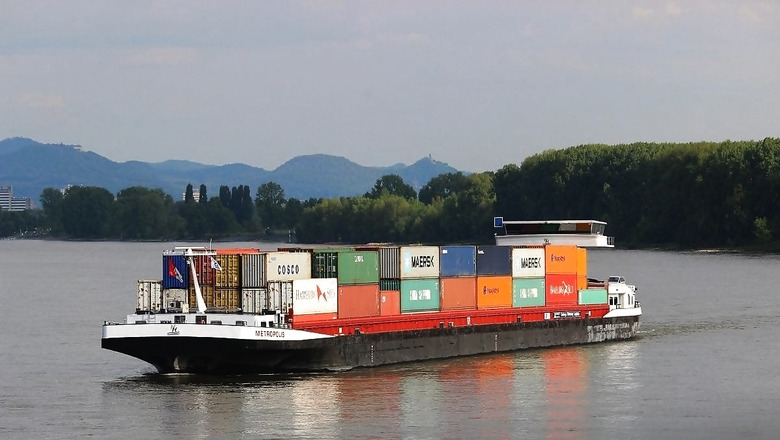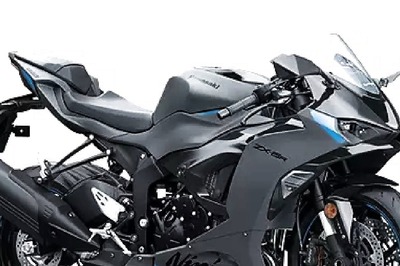
views
Can India’s massive maze of waterways move its freight, bring in more money and reduce carbon emissions? PM Narendra Modi has been championing the revival of India’s waterways recently. The big plan is to take cargo off trucks and put them on ships. India is home to a rich maze of 15,500 km of navigable rivers, backwaters and creeks alongside a vast 7500-km-long coastline. According to the Global Logistics Emissions Council’s framework, the greenhouse gas footprint for a unit distance of cargo transported by waterways is almost half compared to railways and about one-tenth compared to road freight. Despite its potential, India’s waterways currently occupy a mere 6 percent share in cargo and a negligible share in passenger movement.
The government envisions a three-fold increase in inland waterway transport and a 1.2-fold increase in the coastal shipping sector by 2030. Additionally, the Union Ministry of Ports, Shipping and Waterways is working on a Rs 5,000 crore package to facilitate the construction of vessels for inland waterways ships to promote the “Make in India” initiative. This could also present an opportunity to decarbonise the sector by leapfrogging to alternate fuel technologies for vessels. For example, Liquified Natural Gas (LNG) could serve as a transition fuel for cargo-carrying vessels operating in inland waterways and coastal regions. Ammonia and hydrogen could also serve as cleaner fuels though their usage is still at a nascent stage. Further, a recent Council on Energy, Environment and Water (CEEW) study highlights that a transition to solar-assisted electric ferries in the passenger segment and LNG retrofitted vessels for the cargo segment could create a potential market size of Rs 77,000 crore and abate 1.1 million tonnes of CO2 emissions by 2030.
Despite the copious benefits of a clean fuel transition, the waterways vessels market lacks policy direction, a robust local ship-building ecosystem, and the availability of new technology alternatives or retrofitting options.
We propose three key enablers that could drive the adoption of clean fuel vessel technologies in India.
First, the government must create a long-term roadmap for a waterways transition to nudge the market towards clean technologies. The Ministry of Ports, Shipping and Waterways (MoPSW) encourages the construction of vessels that use alternative fuels. The Inland Vessels Bill 2021 acknowledges future technologies like LNG and electric propulsion. However, both the policy and bill offer limited mechanisms to facilitate clean energy adoption in waterway vessels. The government must set a long-term roadmap to enable the fuel technology transition and incentivise it through strategies and programmes like PLIs. Long-term government commitments would offer investors comfort to enter the market and entice private manufacturers.
Second, the waterways sector needs private sector investments to develop and transition to clean technologies. The Union Minister for Ports, Shipping and Waterways, Sarbananda Sonowal, expects India to attract an investment of Rs 35,000 crore by 2047 to create a network of river waterways across the country. Limited competitiveness against global manufacturers, poorly developed ancillary services, high cost of finance and tax burdens currently plague the private sector and stymy investments. The government is already working towards mechanisms like Viability Gap Funding (VGF) to augment private entities working in vessel construction. These mechanisms can be supported with economic instruments similar to the Production Linked Incentive (PLI) scheme in the automotive sector to attract private investments. Investments through public-private partnerships will further bolster the growth in the sector by improving the ecosystem through construction, operations and maintenance of new jetties and multi-modal hubs, with refuelling stations across waterways. This would be instrumental to facilitate the growing passenger and cargo movement in the waterways sector and further create potential and market for alternate fuels in this sector.
Third, India’s fledgling ship-building and repair industry can facilitate the R&D for alternative fuel technologies along to be ahead of the curve. The government has set ambitious targets for India to rank among the top 10 shipbuilding and repair industries. India already tops the ship-breaking and recycling sector and thus can recycle resources to promote a circular economy. Currently, the public sector occupies the lion’s share in the order books, however, the private sector could bring in R&D in alternative fuel technology, retrofitments and cutting-edge designs to rapidly develop the ecosystem for clean technologies. Moreover, pilots for clean fuel technologies involving global experts and local entrepreneurs are imperative to create awareness and visibility among consumers.
Globally, multiple alternate fuel options have been explored to decarbonise vessels. India can be a trendsetter for clean fuel adoption in the new generation of vessels. If we plan to put cargo on water vessels, India will need a robust plan for clean tech, ship-building and economic instruments. This will promote both a blue economy and Make in India.
Himani Jain is a Senior Programme Lead; Nilanshu Ghosh is a Research analyst at the Council on Energy, Environment and Water, an independent, not-for-profit organisation. Views expressed are personal.




















Comments
0 comment